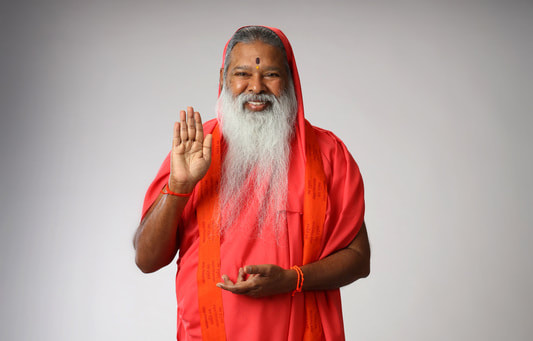Canada: BAPS Shri Swaminarayan Mandir, located in Toronto, Canada, stands as a prominent centre for spiritual practice, cultural heritage, and community service. It is a major part of the BAPS (Bochasanwasi Akshar Purushottam Swaminarayan Sanstha) network of temples worldwide, dedicated to the teachings of Bhagwan Swaminarayan. Opened in 2007, the temple has quickly become a significant landmark in the city, attracting devotees and visitors alike with its grandeur, spiritual significance, and architectural beauty.
Ancient History and Cultural Legacy
The roots of the BAPS Shri Swaminarayan Mandir in Toronto are deeply embedded in the broader history of the Swaminarayan faith, which traces its origins to the 18th century in India. Founded by Bhagwan Swaminarayan in 1801, the Swaminarayan tradition is a prominent Hindu denomination that emphasises devotion to Lord Narayan, ethics, and moral conduct, along with the worship of deities in the form of images and idols.
BAPS (Bochasanwasi Akshar Purushottam Swaminarayan Sanstha) was formally established in the early 20th century by Shastriji Maharaj, who sought to spread Swaminarayan’s teachings and build temples that would uphold the faith. The first Swaminarayan Mandir built in Toronto was part of this broader global effort to establish centres of devotion and service, following the teachings of their spiritual leaders.
Architectural Significance
The BAPS Shri Swaminarayan Mandir in Toronto is a fine example of traditional Hindu temple architecture fused with modern construction techniques. The temple was crafted using intricate limestone and marble, hand-carved by skilled artisans from India. The structure follows the principles of Vastu Shastra, an ancient Indian science of architecture, which is said to create harmony and balance in the environment.
The central shrine of the temple is dedicated to Lord Swaminarayan, and the mandir’s design incorporates elements of traditional Hindu architecture such as domes, spires, and delicate carvings of Hindu deities, mythological stories, and motifs symbolising the spiritual journey. The temple complex also includes community halls, cultural centres, and educational facilities, making it a place for both worship and learning.
Rituals and Significance
The primary rituals at the BAPS Shri Swaminarayan Mandir revolve around the worship of deities, with the central focus being on Bhagwan Swaminarayan, along with other deities such as Radha-Krishna, Sita-Ram, and Lakshmi-Narayan. Devotees engage in various pujas (rituals) throughout the day, with the most significant being the daily morning and evening aarti (prayers) and darshan (ritual viewing of the deity).
The temple also observes significant festivals and events in the Swaminarayan tradition, including the celebrations of Diwali, Janmashtami, and the annual Swaminarayan Jayanti, which marks the birth of Bhagwan Swaminarayan. During these festivals, special prayers, cultural performances, and feasts are organised to bring the community together in a spirit of devotion and celebration.
Beliefs and Philosophy
The teachings of Bhagwan Swaminarayan form the spiritual foundation of the BAPS Shri Swaminarayan Mandir. At the core of the Swaminarayan philosophy is the belief in the supremacy of God, the importance of self-discipline, and the necessity of a guru (spiritual teacher) for spiritual progress. Bhagwan Swaminarayan emphasised moral and ethical values, and his teachings promote devotion to God, service to humanity, and the cultivation of virtues such as compassion, humility, and truthfulness.
Swaminarayan followers believe that through devotion and adherence to spiritual practices, one can achieve moksha (liberation) from the cycle of birth and death, thus attaining eternal peace and bliss with God. The temple serves not only as a place of worship but also as a centre for promoting spiritual education and moral guidance.
Daily Puja and Worship
The daily puja at BAPS Shri Swaminarayan Mandir follows a strict routine, which begins with the opening of the temple gates in the early morning. The first ritual of the day is the Mangla Aarti, a special prayer to awaken the deities. This is followed by a series of offerings, including food, flowers, and incense, along with the chanting of mantras and hymns. The devotees gather to offer their prayers, sing bhajans (devotional songs), and participate in various spiritual activities.
Throughout the day, the temple remains open for devotees to perform individual prayers and engage in meditation. At noon, an elaborate aarti, known as Shayan Aarti, is conducted, during which the deities are offered food and a spiritual prayer session is held. The evening aarti, Rajbhog Aarti, marks the end of the day’s formal worship, before the temple closes for the night.
Celebrations and Community Engagement
The temple’s calendar is filled with celebrations that bring the community together. One of the most significant events is the celebration of the annual Diwali festival, which includes prayers, devotional dances, and a grand feast. Other major celebrations include Janmashtami, which marks the birth of Lord Krishna, and the Swaminarayan Jayanti, commemorating the birth of Bhagwan Swaminarayan.
The temple also engages in a range of social, educational, and charitable activities. The BAPS organisation provides free health services, educational scholarships, and social welfare programmes aimed at benefiting the local community. These initiatives are in keeping with the Swaminarayan tradition of selfless service (seva) and the promotion of peace and harmony among all people.





